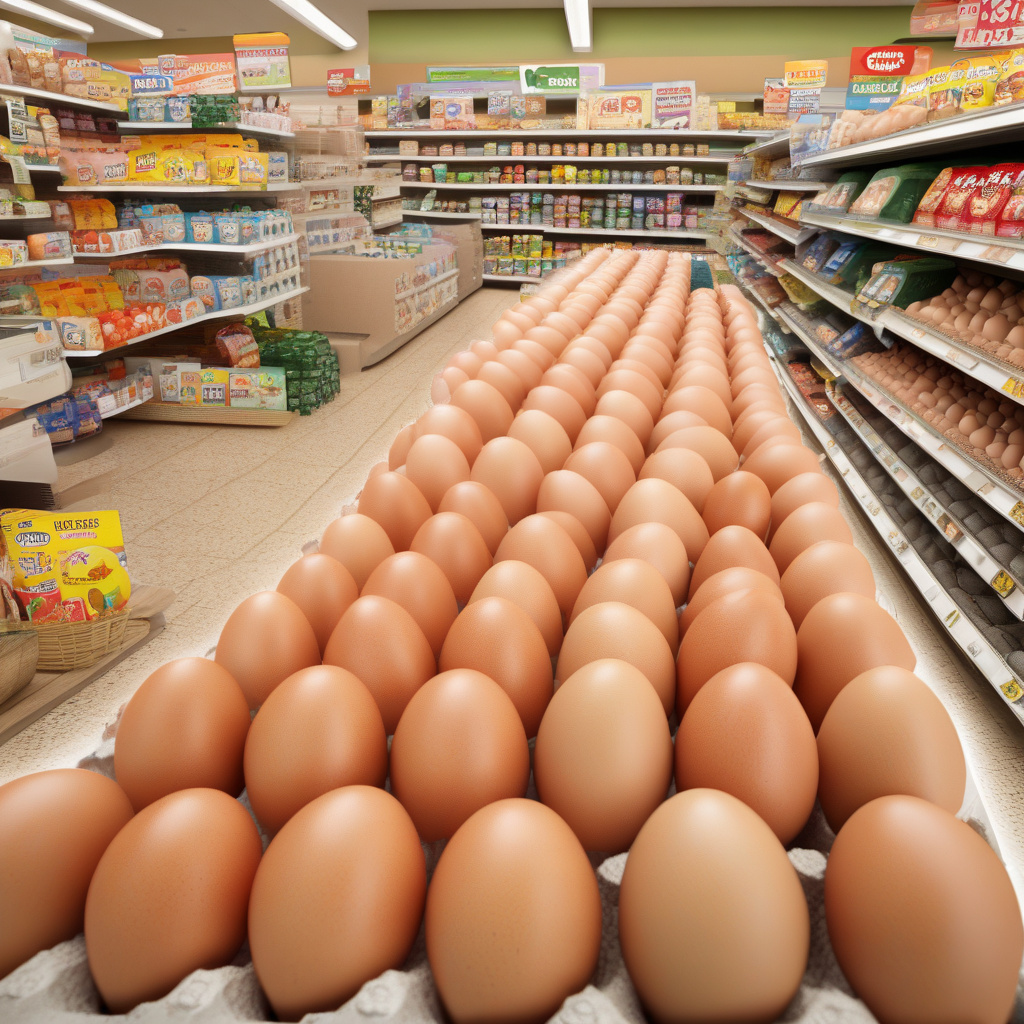The Price of Eggs Hit All Time High Ahead of Easter: When Will There Be Relief?
As the Easter holiday approaches, many consumers are feeling the pinch at the grocery store, particularly when it comes to the price of eggs. This essential item, often associated with the season’s celebrations, has seen its prices soar to unprecedented heights. The average price of a dozen eggs has reached an all-time high, leaving households grappling with the impact on their budgets. The pressing question on everyone’s mind is: when will there be relief from these soaring prices?
The inflationary pressures affecting the egg market can be traced to several key factors. Firstly, avian influenza outbreaks have wreaked havoc on poultry populations across the United States. The Centers for Disease Control and Prevention (CDC) reported that a significant number of flocks were culled to contain the spread of this disease, leading to a dramatic decrease in egg production. According to the United States Department of Agriculture (USDA), the total number of egg-laying hens in the U.S. dropped by nearly 15% in recent months, directly impacting supply.
Supply chain disruptions, exacerbated by the COVID-19 pandemic, have also played a critical role in driving up prices. Transportation delays, labor shortages, and increased operational costs have all contributed to the higher prices consumers are now facing. The combination of reduced supply and increased costs has created a perfect storm, pushing prices to record levels as the holiday season approaches.
The average price for a dozen eggs in the U.S. recently hit around $4.50, almost double the price from the previous year. In certain regions, prices have surged even higher, with reports of consumers paying upwards of $6 for a dozen. This situation has sparked concern among families preparing for Easter festivities, where eggs are not only a staple food item but also a central component of many traditional celebrations.
So, when can consumers expect relief from these escalating prices? Analysts suggest that some stabilization may occur as the egg industry adjusts to the current challenges. The USDA has indicated that as production ramps up in the wake of avian influenza containment efforts, supply should begin to improve. However, this recovery may take time. Poultry farmers face a lengthy process of rebuilding their flocks, which means it could be several months before egg supplies return to normal levels.
Additionally, experts are keeping a close eye on market trends. As Easter approaches, demand for eggs typically increases, driven by the popularity of egg dyeing and Easter egg hunts. This seasonal spike in demand could further complicate the price situation. However, once the holiday passes, it is anticipated that demand will taper off, potentially leading to a gradual decrease in prices.
Consumers are advised to be proactive in their shopping strategies during this time. Buying eggs in bulk or purchasing from local farms may offer more competitive prices. Additionally, considering alternatives such as powdered eggs or egg substitutes could provide a more budget-friendly option for those looking to manage their grocery expenses.
In conclusion, the current high prices of eggs are a result of a combination of factors, including disease outbreaks and supply chain challenges. While relief may be on the horizon as production increases, consumers should remain vigilant and adaptable in their shopping habits. The situation serves as a stark reminder of the interconnected nature of our food supply and the impact that unforeseen events can have on everyday essentials.
As we celebrate Easter, it is crucial to be aware of these economic realities and to plan accordingly. The hope is that in the coming months, prices will stabilize, allowing consumers to return to normalcy in their grocery shopping.
egg prices, avian influenza, Easter shopping, grocery prices, inflation
